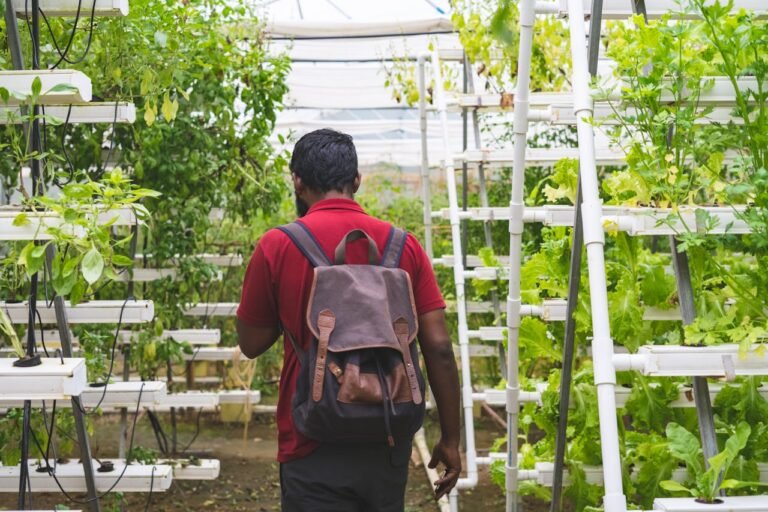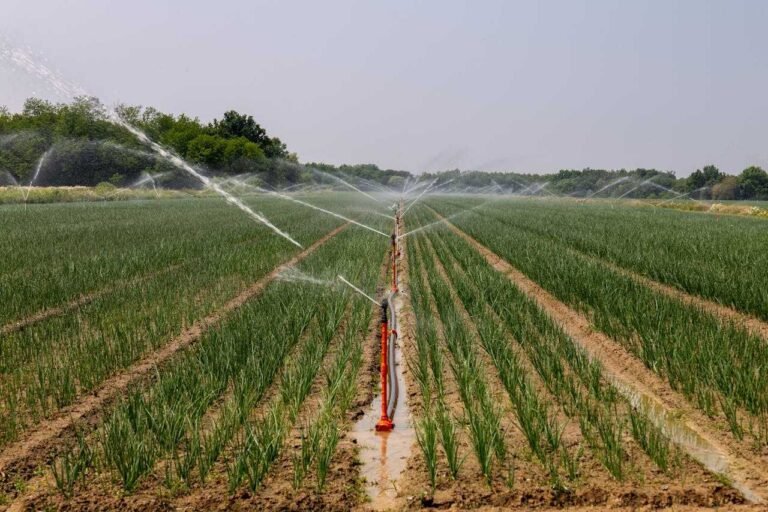Pros and Cons of Crop Rotation in Agriculture
In 2020, researchers at the University of California, Berkeley, found that integrating diverse crops into rotation systems boosted corn yields by an average of 28%, with increases ranging from 15% to 90% depending on the crops used. This finding highlights the transformative potential of crop rotation in enhancing agricultural productivity.
Crop rotation, the practice of alternating different crops on the same land across seasons, offers numerous benefits, including improved soil health and pest management. However, it also presents challenges such as increased planning complexity and potential market limitations for certain crops. This article looks into the pros and cons of crop rotation, providing insights to help farmers and agricultural stakeholders make informed decisions about implementing this age-old practice in modern farming systems.

In This Article
- What Is Crop Rotation?
- Advantages of Crop Rotation
- Disadvantages of Crop Rotation
- Overcoming the Challenges of Crop Rotation
- Real-World Experiences
- Conclusion: The Future of Crop Rotation
What Is Crop Rotation?
Crop rotation is a farming practice where different crops are grown in the same field across different seasons or years. Instead of planting the same crop repeatedly, which can drain the soil of nutrients and invite pests, farmers switch things up. For example, they might plant maize one season, followed by legumes like beans or groundnuts the next. This approach helps maintain soil fertility, manage pests, and reduce the need for chemical fertilisers.
A Brief History of Crop Rotation
The concept of rotating crops isn’t new. Ancient civilisations, including those in the Near East around 6000 BC, practised early forms of crop rotation by alternating cereals with legumes to rejuvenate the soil.
In medieval Europe, the three-field system became common. This method divided land into three parts: one for winter crops like wheat, one for spring crops such as peas or beans, and one left fallow to recover. While this system increased productivity compared to earlier methods, it still left a third of the land unused each year.
A significant advancement came in the 18th century with the Norfolk four-course system, popularised by British agriculturist Charles Townshend. This method rotated four crops over four years: wheat, turnips, barley, and clover or ryegrass. The inclusion of turnips and clover not only provided fodder for livestock but also improved soil health. Livestock manure further enriched the soil, creating a sustainable cycle that enhanced yields and reduced the need for fallow periods.
Today, crop rotation remains an integral aspect of sustainable agriculture, helping farmers maintain productive fields while caring for the environment.
Advantages of Crop Rotation
1. Enhanced Soil Fertility
Different crops have varying nutrient requirements and root structures. For instance, legumes like beans and peas can fix atmospheric nitrogen, enriching the soil for subsequent crops. This natural process reduces the need for synthetic fertilisers, promoting sustainable farming practices. Additionally, alternating deep-rooted and shallow-rooted plants helps in accessing nutrients at different soil depths, preventing nutrient depletion in specific soil layers. According to the Sustainable Agriculture Research and Education (SARE) program, crop rotation can improve nutrient cycling and soil fertility by stimulating soil microbial communities and enhancing soil structure.
2. Pest and Disease Management
Rotating crops disrupts the life cycles of pests and diseases specific to certain plants. For example, alternating corn with non-host crops can reduce corn rootworm populations, as the larvae have no known other agricultural host plant and will starve if corn is not planted. This practice reduces the reliance on chemical pesticides, leading to a more environmentally friendly approach to pest management. Furthermore, a 2023 study suggests that diverse crop rotations can decrease weed, pest, and disease pressure, thereby requiring less fertilisation and crop protection inputs.
3. Weed Suppression
Different crops compete differently with weeds. Including cover crops or crops with dense canopies can suppress weed growth, reducing the reliance on herbicides. For instance, grass cover crop species like cereal rye, winter wheat, and oats are effective in suppressing weeds due to their rapid growth and dense canopy, which shades the ground and inhibits weed seed germination. This natural weed control method contributes to sustainable farming by minimising chemical herbicide usage.
4. Improved Soil Structure and Reduced Erosion
Crops with extensive root systems, like grasses, help bind the soil, reducing erosion. Cover crops also protect the soil surface from wind and water erosion. For example, using cover crops like cereal rye, oats, or specific types of wheat can help safeguard the topsoil. These plants serve as a protective layer over the ground and contribute root systems that enrich the soil with nutrients, maintaining favourable growing conditions. This practice not only preserves soil health but also maintains the land’s productivity over time.
5. Increased Biodiversity
Rotating crops increases the diversity of plant species in a given area, which can enhance the resilience of the farming system and promote beneficial insect populations. A diverse crop rotation gives soil microbes different food sources, ultimately making the soil healthier. This biodiversity supports a balanced ecosystem, reducing the prevalence of pests and diseases and promoting pollinator populations essential for crop production.
6. Economic Benefits
By improving yields and reducing the need for chemical inputs, crop rotation can enhance farm profitability. Studies have shown that rotated crops can produce 10-25% higher yields compared to continuous monocropping. For instance, a study published in Nature found that rotating winter wheat–summer maize with non-cereal crops led to significant improvements, including a 26–32% rise in grain yield, a 39–46% boost in economic returns, and a 25–29% increase in protein output, compared to continuous cultivation of winter wheat–summer maize alone. These economic advantages make crop rotation a viable strategy for sustainable and profitable farming.
Disadvantages of Crop Rotation
1. Complex Planning Requirements
Implementing an effective crop rotation system requires meticulous planning. Farmers must consider various factors, including the compatibility of successive crops, soil nutrient requirements, and the timing of planting and harvesting. This complexity can be particularly daunting for small-scale farmers who may lack access to advanced planning tools or agronomic expertise.
For instance, rotating crops like legumes, cereals, and root vegetables necessitates understanding their specific nutrient needs and growth patterns. Failing to plan appropriately can lead to nutrient imbalances, reduced yields, and increased susceptibility to pests and diseases.
2. Increased Labour and Management
Managing a diverse crop rotation system often demands more labour and management skills. Each crop has unique requirements for planting, maintenance, and harvesting. This diversity can lead to increased labour costs and the need for specialised knowledge.
For example, transitioning from a monoculture system to a diversified rotation may require training workers on different cultivation techniques and investing in additional labour during peak seasons. According to a study published in ScienceDirect, more diverse rotations increase management complexity and require additional knowledge and understanding of new crops.
3. Initial Costs
Adopting a crop rotation system can involve significant initial investments. Farmers may need to purchase new equipment, acquire different seed varieties, and possibly invest in soil amendments to accommodate various crops. These upfront costs can be a barrier, especially for farmers operating on tight budgets.
A report from Iowa State University Extension highlights that transitioning to a crop rotation system may involve upfront costs, such as purchasing new equipment or seeds for different crops. While these investments can lead to long-term benefits, the initial financial burden can be challenging.
4. Market Limitations
Not all crops included in a rotation have strong market demand. Farmers may face challenges selling certain rotational crops if there is limited local demand or processing infrastructure. This situation can affect profitability and may discourage farmers from adopting diverse rotations.
For instance, integrating cover crops or less common legumes into a rotation may improve soil health but offer limited direct economic returns if there is no established market. According to the Sustainable Agriculture Research and Education, not every crop is equally profitable, and some crops are highly profitable but have limited markets.
5. Climatic and Seasonal Constraints
Implementing crop rotation can be challenging in regions with short growing seasons or unpredictable weather patterns. Some crops may not perform well under certain climatic conditions, affecting the rotation plan. Climate variability can disrupt planting and harvesting schedules, leading to reduced yields and increased risk of crop failure.
A study conducted in northern Benin found that farmers are adjusting their agricultural calendars in response to climate variability, which affects the timing of planting and harvesting. The research highlights that without adequate support and climate-related information, farmers rely on personal experience to make decisions, which may not always be effective in mitigating the risks associated with unpredictable weather patterns.
Overcoming the Challenges of Crop Rotation
While crop rotation has its challenges, many of these can be mitigated through careful planning, education, and research.
Here are some actionable steps that farmers can take to maximize the benefits of crop rotation while minimizing the challenges:
Start Small: If you’re new to crop rotation, begin with a small section of your farm. This approach allows you to learn and adjust without overwhelming yourself. As you gain experience, you can gradually expand the practice to larger areas.
Seek Knowledge and Expert Advice: Educate yourself through agricultural extension services, agronomists, or local farming cooperatives. These experts can help you design a rotation plan tailored to your soil type, climate, and financial goals.
Leverage Technology: Modern tools like GPS-guided systems and crop management software can simplify the complexities of crop rotation. These technologies assist in tracking planting schedules, monitoring soil health, and making informed decisions based on real-time data.
Diversify for Profit: Introducing high-value crops such as organic vegetables, herbs, or flowers into your rotation can open new markets and increase income. According to the USDA, diversification also helps in managing pests and diseases by disrupting their life cycles.
Incorporate Cover Crops: Planting cover crops like legumes or grasses during off-seasons can enhance soil fertility, prevent erosion, and improve water retention. These benefits contribute to healthier main crops and long-term soil sustainability.
Real-World Experiences
Lessons from Iowa: Continuous Soybean Planting
At Iowa State University, researchers are studying the long-term effects of planting soybeans year after year without the traditional corn-soybean rotation. Initial findings from their ongoing study, which began in 2023, reveal that in the short term, continuous soybean plots can yield as much as rotated ones. However, scientists caution that over time, this practice may lead to challenges like increased pest pressures and declining soil health. Specifically, the study highlights concerns about the potential reduction in soil organic matter, as the microbial activity stimulated by soybean residues might accelerate the decomposition of existing organic materials in the soil.
Ugandan Farmers Rebuilding Through Crop Rotation
In northern Uganda, communities recovering from years of conflict have turned to crop rotation as a means to restore their livelihoods and the land. With support from organisations like the Food and Agriculture Organisation (FAO), farmers have adopted practices such as rotating rice, onions, and beans. This approach has not only improved soil fertility but also diversified income sources, contributing to greater community resilience. For instance, in the Dokolo district, farmer field schools have been instrumental in teaching sustainable farming techniques, leading to increased yields and better market access.
These real-world examples show the importance of understanding local conditions and long-term impacts when making agricultural decisions. While continuous cropping might offer short-term gains, practices like crop rotation can provide sustainable benefits that support both the land and the people who depend on it.
Learn More: Pros and Cons of the Green Revolution
Conclusion: The Future of Crop Rotation
Crop rotation remains one of the most effective and sustainable practices in modern agriculture. It offers numerous environmental, economic, and agricultural benefits, from improved soil health to reduced reliance on chemical pesticides. While the practice is not without its challenges, many of these can be overcome through careful planning, education, and innovation.
As climate change and environmental pressures continue to impact farming practices, crop rotation will likely play an even more crucial role in ensuring long-term food security. By embracing crop rotation, farmers can contribute to a healthier, more sustainable agricultural system that benefits not only their farms but the planet as a whole.
Whether you are a seasoned farmer or new to agriculture, crop rotation is a proven strategy worth considering. Take the time to explore its possibilities, adapt it to your own circumstances, and start making the most of this time-tested practice.







